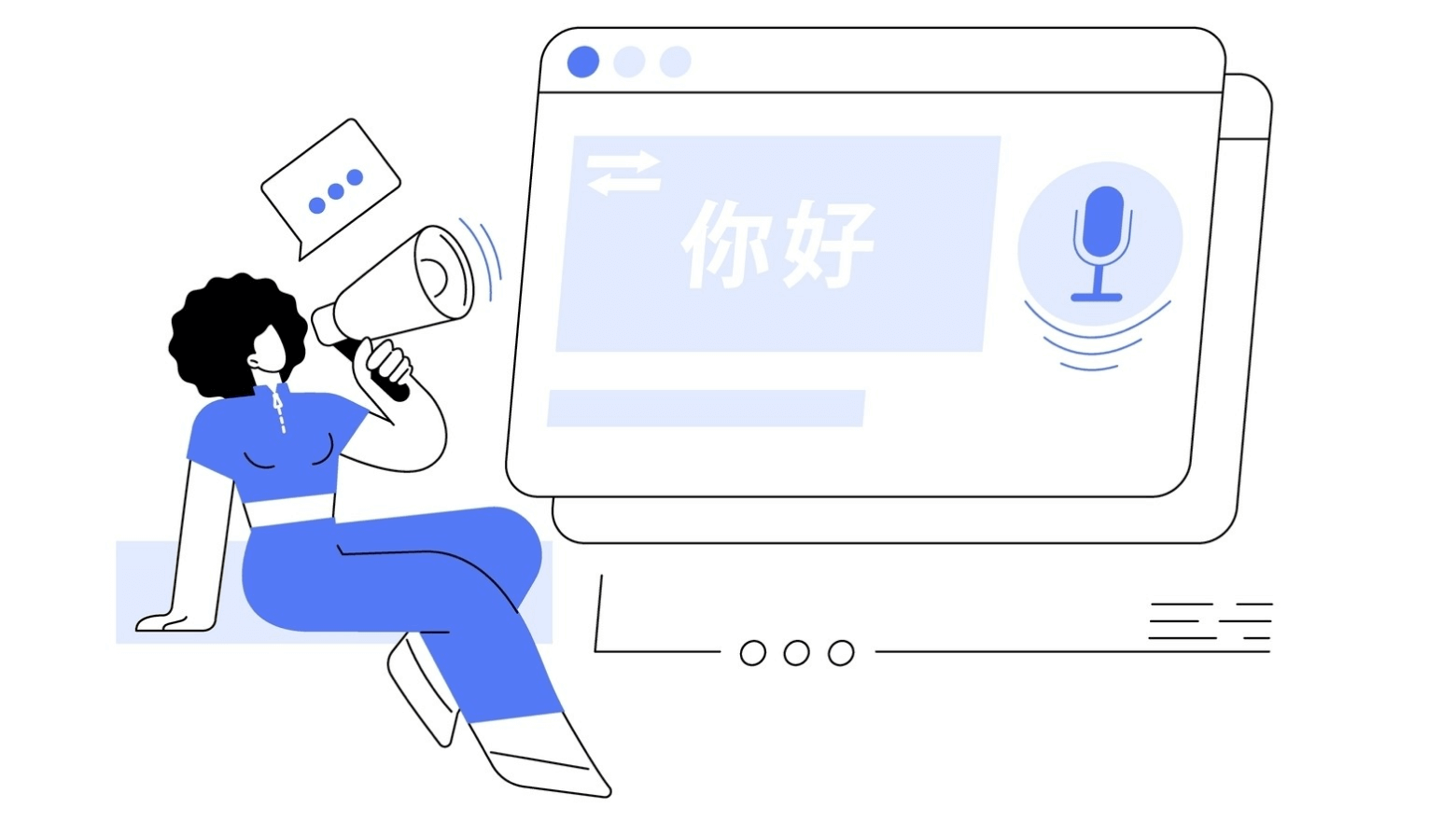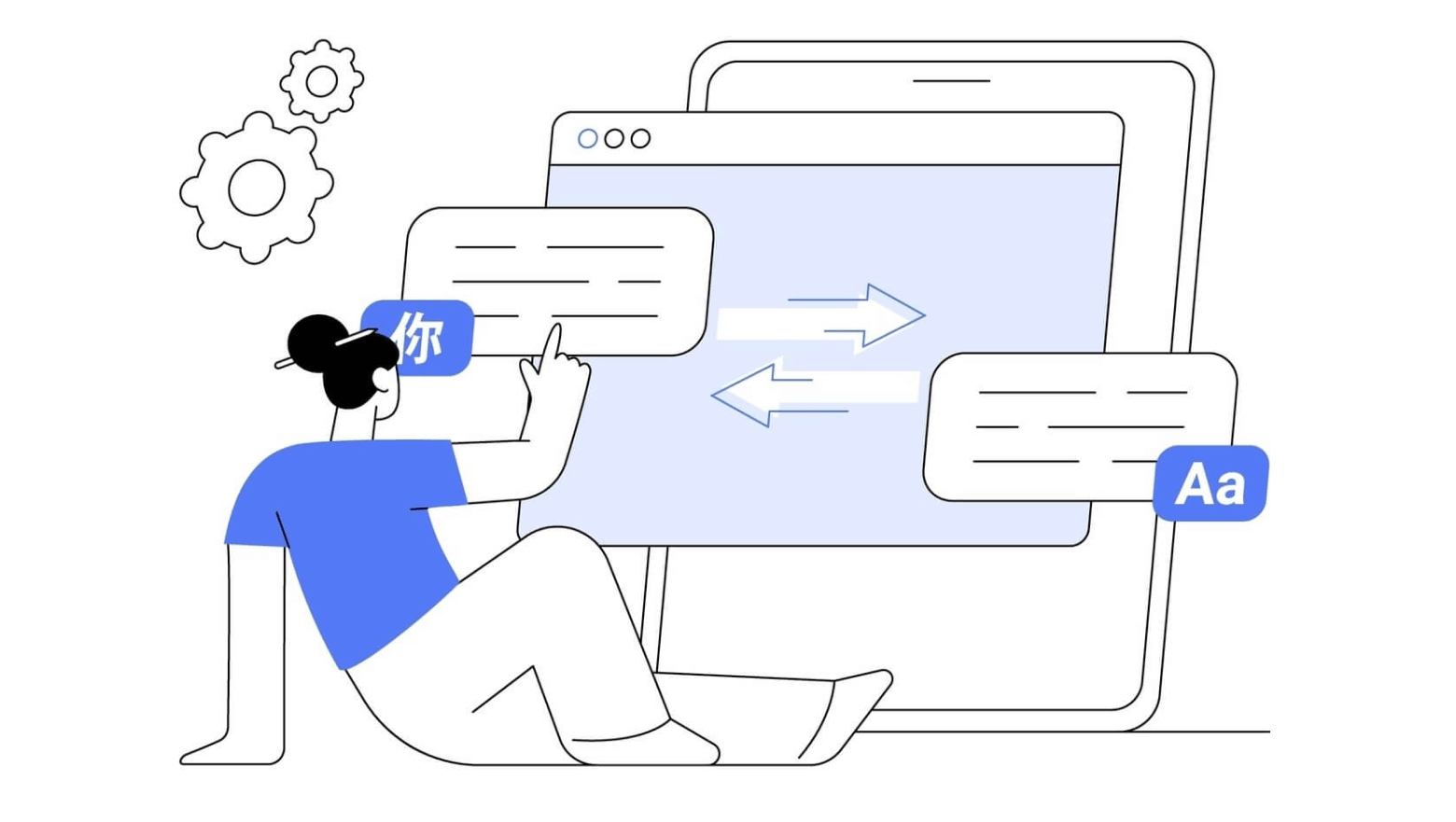Imagine transforming hours of manual transcription into a matter of minutes or offering real-time translations that blow your clients' minds. Sounds too good to be true? Trust us, it's not. Speech recognition technology is revolutionising the way Language Service Providers (LSPs) operate, and it’s about time you got in on the action.
In this article we're diving into speech recognition technology and how it can supercharge your language services.

What is speech recognition?
Speech recognition is a technology that turns whatever you say out loud into written words. Behind the scenes, there are smart algorithms and machine learning models. They’ve been trained on tons of different voices and accents, so whether you have a thick accent or speak in a soft whisper, they get you.
When you're talking to your computer or phone, it listens to you through a microphone and captures everything you say. Before it can understand you, the system needs to clean up the audio. It removes any background noise, so your voice is clearer. Next, it takes your voice and breaks it down into tiny pieces, like sound waves or bits of sound. These pieces are called “features”.
The system has been trained on tons of data (like thousands of hours of recorded speech). It uses this training to match the features of your voice to known speech patterns. Basically, it tries to figure out which sounds correspond to which words.
But it doesn’t just recognize the words; it also looks at the context. For example, if you say “I scream”, it knows you're more likely to be saying “ice cream” based on the context of the surrounding words.
Finally, after understanding what you said, the system converts your speech into written text. This text can be used for anything you need, like typing a message, transcribing a meeting, or even translating into another language.
Benefits of speech recognition for Language Service Providers
Boosting productivity
It eliminates the need for manual typing, allowing translators and transcribers to focus on higher-level tasks. This automation increases productivity, enabling Language Service Providers (LSPs) to handle larger volumes of work in less time. A task that would traditionally take several hours of manual transcription can be completed in a fraction of the time with the help of advanced speech recognition tools. This efficiency boost means that projects can be finished faster.
Reducing human error
By using speech recognition technology, LSPs can reduce the risk of human error, which is often introduced during manual transcription. For example, advanced speech recognition systems can consistently distinguish between homophones (words that sound the same but have different meanings) based on context.
Cost savings
An LSP that typically spends a significant portion of its budget on manual transcription services can reallocate those funds to other areas, such as marketing or technology development, by integrating speech recognition technology into their workflow. The initial investment in speech recognition software is often quickly offset by the long-term savings in labour and operational costs.
Enhancing client service
One of the most compelling benefits of speech recognition for LSPs is the ability to deliver faster and more reliable services to clients. Quicker turnaround times on projects mean that clients receive their deliverables sooner.
Practical applications
Transcription services
One of the primary applications of speech recognition technology for Language Service Providers (LSPs) is in the realm of transcription services. Traditionally, transcription has been a time-consuming process requiring human transcribers to listen to audio recordings and manually type out the spoken content. Speech recognition technology streamlines this process by automatically converting spoken words into text with high accuracy.
For example, legal firms and medical institutions often require precise and timely transcriptions of meetings, interviews, and consultations, which can now be delivered faster and more cost-effectively.
Real-time translation
Speech recognition also opens up new possibilities for real-time translation services. By integrating speech recognition with machine translation, LSPs can offer live translation of spoken content. This is particularly useful for international conferences, business meetings, and live broadcasts. Moreover, speech recognition at conferences is ideal for captioning.
Subtitling and captioning
Another important application of speech recognition technology is in the creation of multilingual video subtitling. With the rise of video content across various platforms, there is a growing demand for accurate and timely subtitles and captions to make content accessible to a wider audience, including those who are deaf or hard of hearing. This service is invaluable for media companies, educational institutions, and online content creators who need to produce high-quality, accessible content efficiently.
By leveraging speech recognition technology, LSPs can not only enhance their existing services but also expand their offerings to include new, innovative solutions.
Choosing the right speech recognition tool
- Look for a tool that offers high accuracy in recognizing different accents and dialects.
- Ensure the tool supports multiple languages to cater to your diverse client base.
- Choose a tool that can easily integrate with your existing systems and workflows.
- Opt for software that allows customization to suit specific industry jargon and terminology
- Choose a tool that can scale with your business.
- Consider the cost-benefit ratio of the speech recognition software.
Why Lingvanex is the best solution?
Lingvanex is a leading provider of machine translation services and speech recognition technologies. Our innovative solutions cater to a wide range of industries, helping businesses streamline their communication processes.
- Lingvanex speech recognition software stands out with its advanced algorithms that ensure precise and reliable transcriptions.
- Provides extensive language coverage, making it an excellent choice for LSPs operating in global markets.
- Offers seamless on-premise speech recognition software, allowing you to incorporate speech recognition capabilities into your current platforms without hassle.
- Allows you to train the model on your domain-specific vocabulary, enhancing its accuracy and relevance to your field.
- Operates locally, within the premises of an organisation or individual, rather than relying on external servers or cloud-based services.
- Lingvanex is designed to handle varying volumes of data, making it a scalable solution for LSPs of all sizes.
- Offers competitive pricing with flexible plans, allowing you to choose a package that fits your budget while maximising return on investment.
For more information on how Lingvanex can transform your LSP business, contact our sales team for a personalised consultation.
Conclusion
Looking forward, the future of speech recognition is bright. With continuous advancements, the possibilities are endless, and those who embrace this technology now will be ahead of the curve.
So, if you haven’t considered integrating speech recognition into your services yet, now’s the time! It’s a fantastic way to stay competitive and provide top-notch service to your clients. Keep exploring, stay curious, and let technology elevate your language services to the next level!



